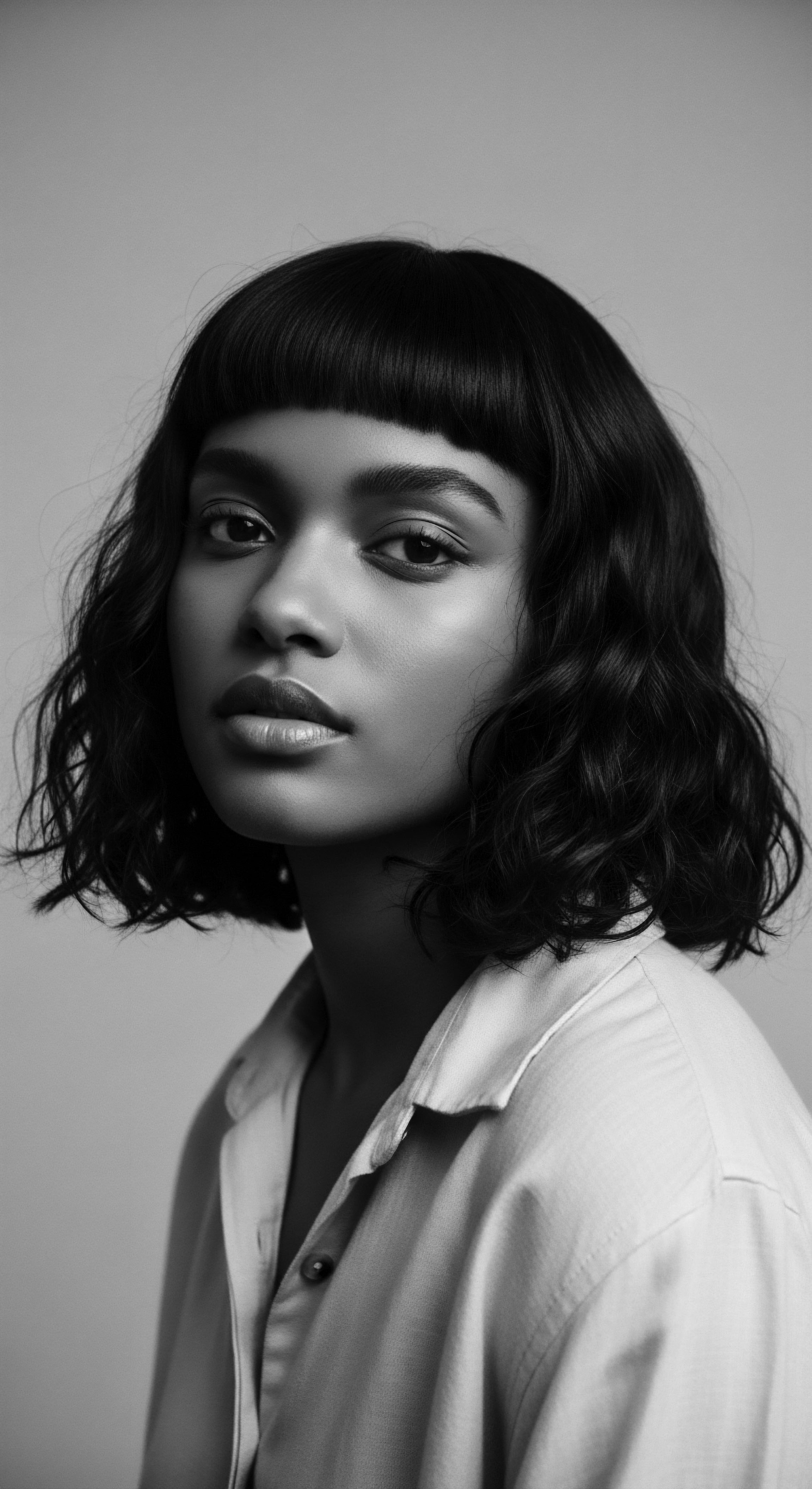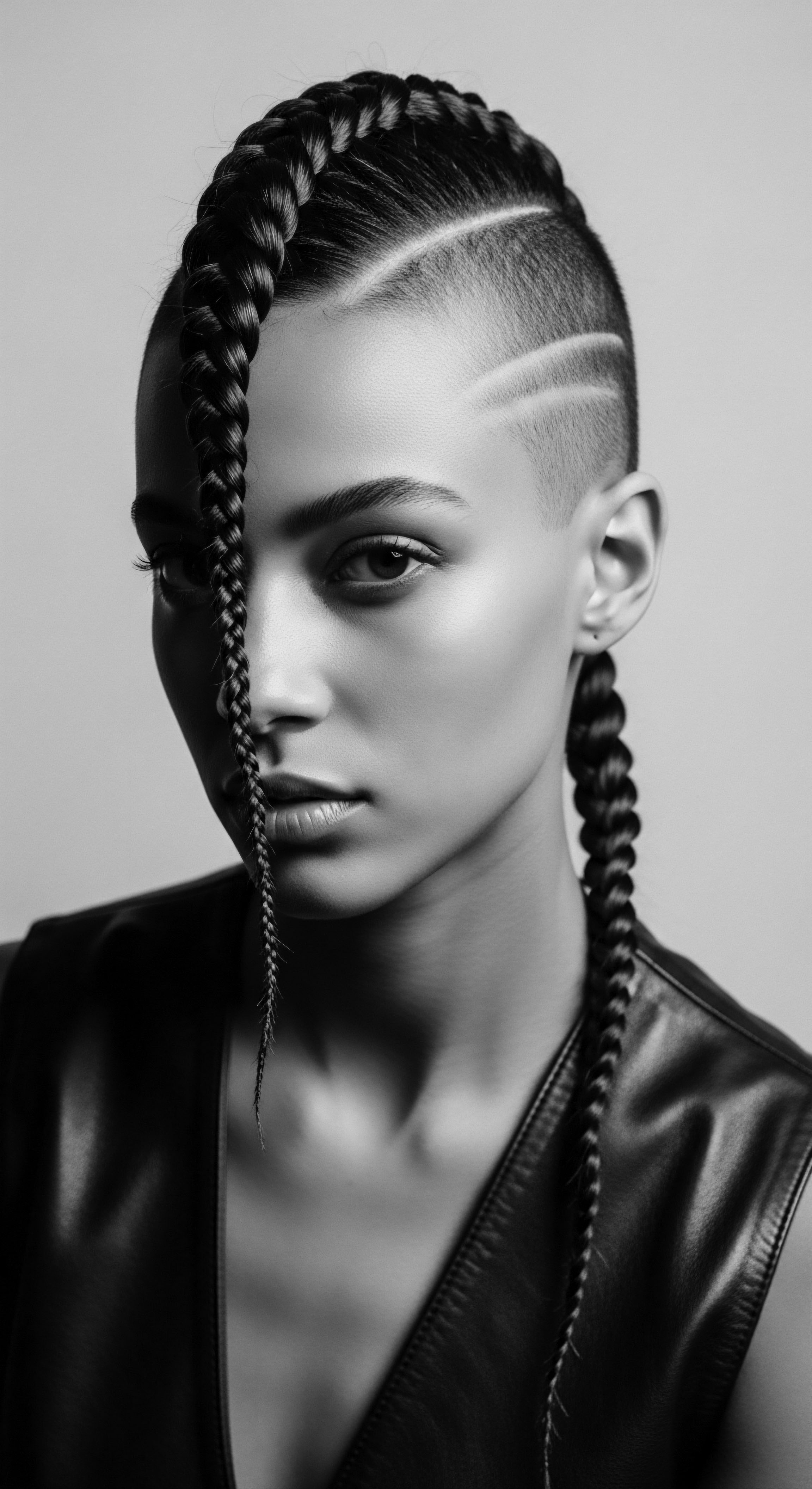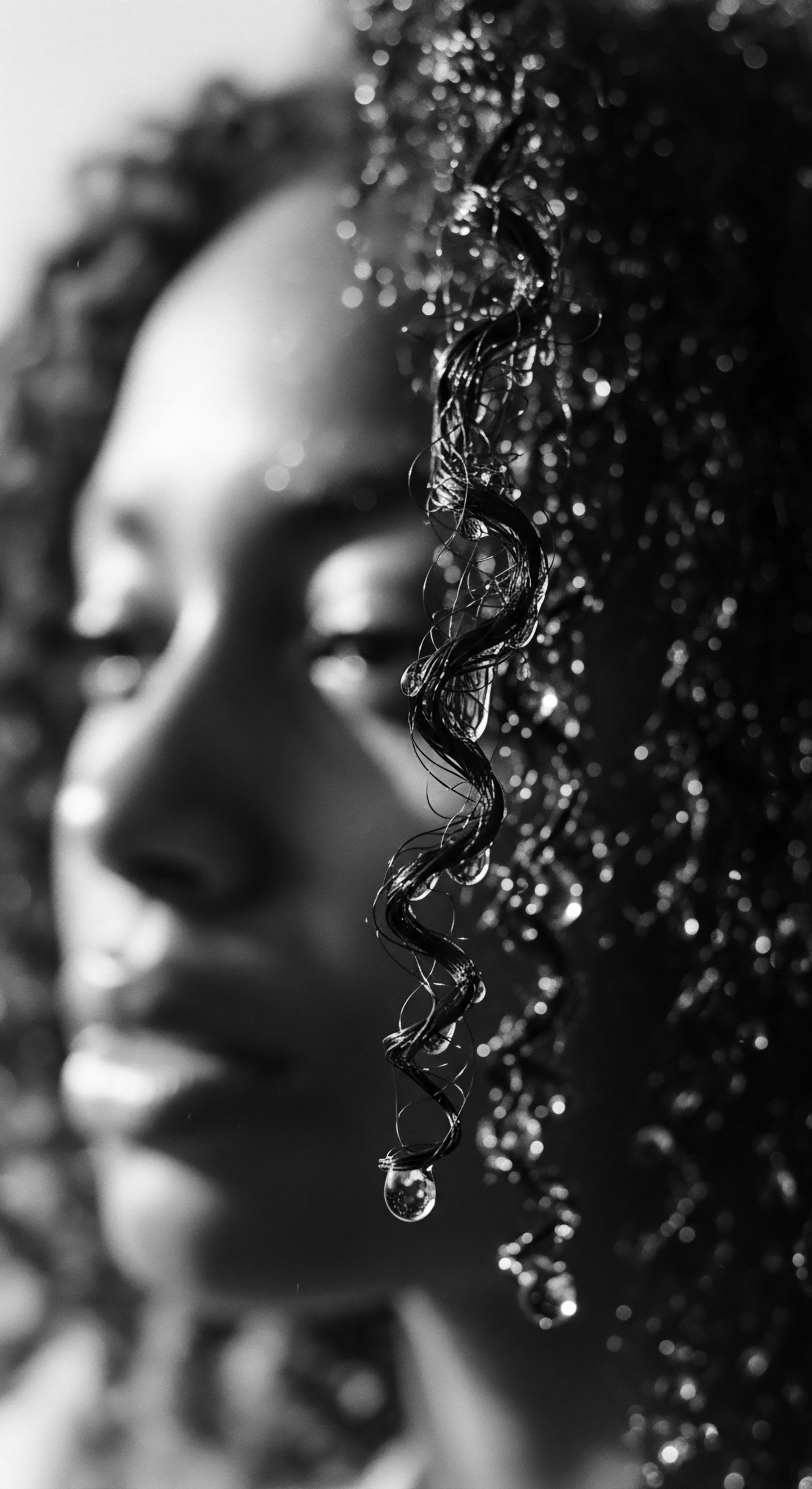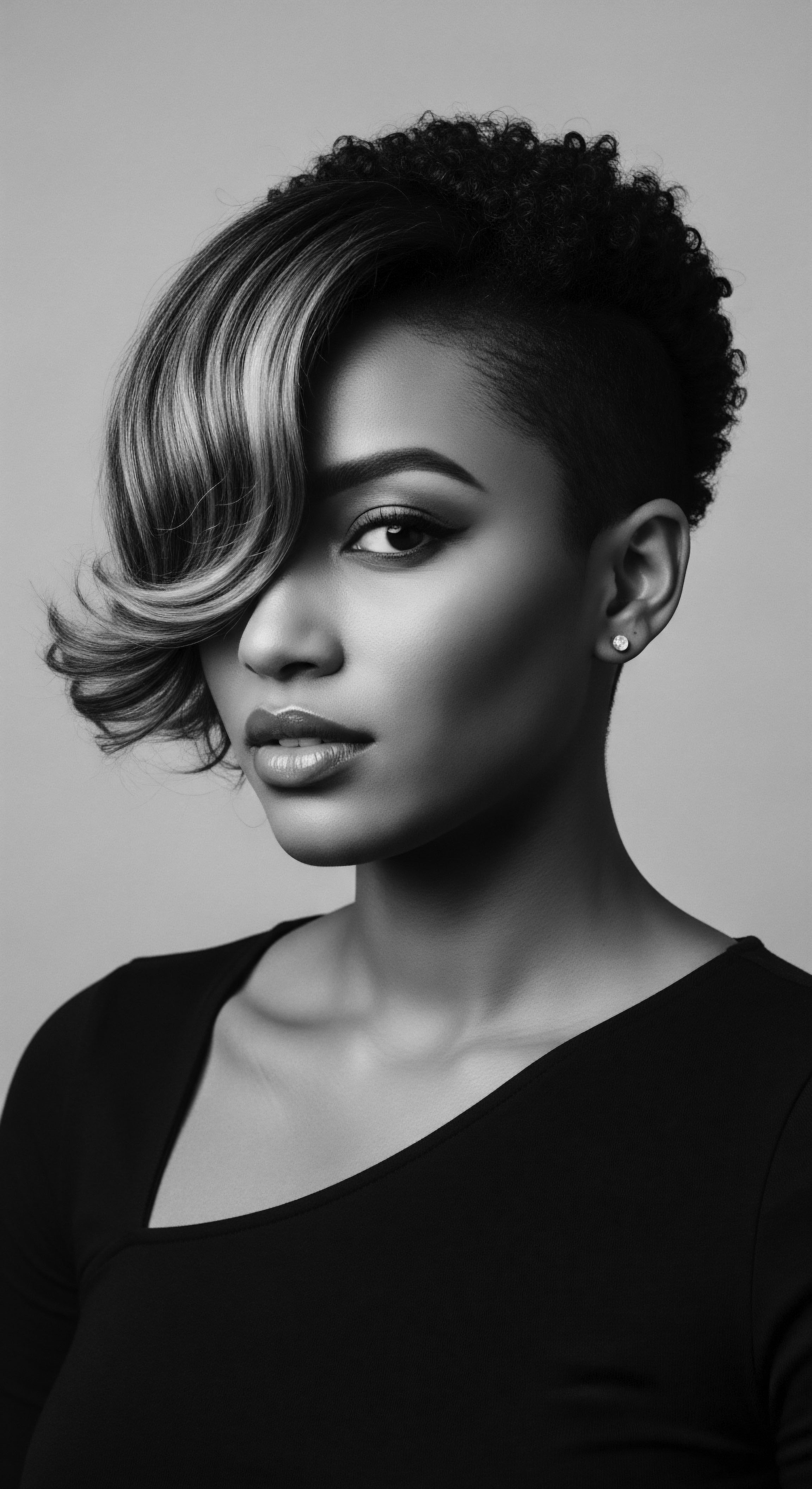
Roots
When considering the vast and venerable realm of textured hair care, one often finds themselves drawn to ingredients whose stories intertwine with ancient lands and ancestral wisdom. Our journey begins not with a simple query into how Cupuaçu butter contrasts with shea butter for textured strands, but rather with a profound recognition of their lineage. These aren’t merely botanical extracts; they are distillations of centuries of human ingenuity, cultural perseverance, and an intimate understanding of the natural world. From the sun-drenched savannahs of West Africa to the verdant, life-giving cradle of the Amazon, these butters stand as testaments to the enduring traditions of care, passed down through generations, each application a whisper of heritage.

Hair’s Deep Ancestral Structure
The very fabric of textured hair, with its unique helical patterns and intricate bends, has long been a subject of both scientific wonder and cultural reverence. Unlike hair structures that follow a straighter path, coily, kinky, and wavy strands possess an inherent architecture that, while visually arresting, often presents distinct needs for hydration and protection. This anatomical blueprint means the cuticle layers, those delicate, shingle-like scales that guard the inner cortex, tend to lift more readily. Such lifting, while natural, can allow moisture to escape, contributing to dryness and vulnerability.
Our ancestors, long before microscopes revealed these truths, understood this inherent thirst. Their practices, honed over countless seasons, instinctively addressed this fundamental biological reality, seeking out gifts from the earth that could soothe and seal.

Origins of Earth’s Emollients
To truly grasp the comparative attributes of Cupuaçu and shea butter, we must first honor their points of genesis. Shea Butter, derived from the nuts of the venerable African Shea tree, or Vitellaria paradoxa, grows wild across the ‘Shea Belt’—a vast expanse stretching from Senegal to Uganda. For millennia, this tree, affectionately known as ‘The Tree of Life,’ has been a cornerstone of life and culture in West African communities. Its very existence is interwoven with the daily rhythms, medicinal practices, and ceremonial rites of various peoples.
The extraction process, a meticulous, labor-intensive ritual, has been preserved and transmitted through oral tradition, a testament to its profound cultural value. Women, the custodians of this ancestral knowledge, gather, boil, dry, and grind the nuts, transforming them into the rich, unctuous butter that has sustained generations.
Across the Atlantic, deep within the pulsating heart of the Amazon rainforest, another botanical marvel yields its bounty ❉ the Cupuaçu tree, or Theobroma grandiflorum. A close relative of the cacao tree, Cupuaçu has been a treasured secret of indigenous Amazonian populations in Brazil, Peru, and Colombia for centuries. Its seeds, when pressed, yield a butter whose properties are as remarkable as the forest itself.
For these communities, Cupuaçu was not merely a cosmetic ingredient; it was a source of sustenance, a medicinal balm, and a symbol of vitality. The ancestral wisdom of the Amazon recognized its deep hydrating and soothing attributes, applying it to skin and hair to alleviate dryness and promote wellness.
The ancient wisdom embedded in shea and Cupuaçu butter use speaks to a profound ancestral understanding of textured hair’s deep need for moisture and protection.

Ancient Lexicon of Hair Care
Understanding the language of textured hair care often leads us back to the terms crafted by those who first tended to these glorious crowns. The concept of Moisture Retention, while articulated with modern scientific precision today, was a lived experience for ancestral communities. They intuitively grasped the challenge of keeping the life-giving moisture within the hair shaft, particularly for coiled and kinky patterns. Consider the historical emphasis on “sealing” practices, often involving butters or oils, as a means to guard the delicate strands from environmental elements.
This pragmatic approach, rooted in everyday observation, formed the bedrock of hair care regimens long before laboratories could analyze lipid barriers or transepidermal water loss. The very word Emollient, though Latin in origin, finds its practical expression in the softening touch of these historical remedies on thirsty hair.
- Karité ❉ A revered traditional name for the Shea tree and its butter, carrying the weight of West African heritage.
- Manteiga De Cupuaçu ❉ The Portuguese term for Cupuaçu butter, reflecting its Amazonian origins and cultural presence in Brazil.
- Scalp Oiling ❉ An ancient practice, found across diverse cultures, prioritizing the health of the scalp as the source of healthy hair growth, often utilizing indigenous butters.

Ritual
The transition from elemental understanding to the living practice of care transforms ingredients into rituals. For textured hair, this has always held particular resonance. Hair, throughout Black and mixed-race experiences across the globe, has never simply been an adornment; it is a repository of stories, a canvas for identity, and a profound connection to ancestral legacy.
The application of butters, therefore, transcends mere cosmetic routine, becoming a ceremonial act, a tender dialogue between present hands and the wisdom of those who came before. In this space, both Cupuaçu and shea butter have played, and continue to play, significant roles, shaping not just physical strands but spiritual bonds.

Shea Butter’s Enduring Legacy in West African Hair Traditions
Shea butter’s story is one of enduring cultural significance. In West Africa, it has been used for centuries, not only for its profound moisturizing properties but for its holistic contributions to community well-being. Traditional hair styling, deeply embedded in social structures and expressions of identity, often relied on shea butter to prepare, protect, and adorn the hair. Think of the intricate braiding patterns, the meticulously crafted twists, and the grand, sculpted updos.
Each of these styles, often created during communal gatherings, found in shea butter an indispensable ally. Its ability to seal moisture, provide a gentle hold, and impart a healthy luster made it a cornerstone of protective styling, preserving fragile strands from harsh environmental elements and minimizing breakage. It was used to condition hair, reduce frizz, and promote a healthy scalp. This butter was applied to newborns, a protective blessing for new life, and incorporated into wedding preparations, symbolizing beauty and fertility. The very act of applying shea butter, often passed from elder women to younger generations, became a shared practice, a quiet instruction in self-care and a reaffirmation of collective heritage.

Cupuaçu’s Amazonian Influence on Hair Care
While shea butter’s global presence in hair care has been long established, Cupuaçu butter steps onto the broader stage carrying the quiet strength of its Amazonian roots. For indigenous communities of the rainforest, Cupuaçu was, and remains, a vital resource for health and daily life. Though perhaps less globally documented in specific traditional hair styling rituals than shea, its inherent properties would have naturally lent themselves to hair care within its native context. Its capacity to absorb water, its softening qualities, and its nourishing components would have been instinctively recognized and used to tend to hair and skin, particularly in humid climates where moisture balance is a constant concern.
The traditional toolkit of Amazonian peoples, shaped by the abundance of the rainforest, would have included instruments for preparing and applying such botanical treasures, facilitating their role in maintaining healthy hair. The wisdom associated with Cupuaçu speaks to a reverence for equilibrium, for drawing what is needed from the environment to maintain inherent vitality.
Butters like shea and Cupuaçu transcend simple ingredients; they are living expressions of ancestral rituals, preserving hair and culture alike.

Modern Styling Echoes Ancient Practice
In contemporary textured hair care, the principles of moisture retention and protection, inherited from ancestral practices, continue to shape our styling choices. Protective styles, from elaborate braids and twists to simple buns, remain cornerstones for preserving length and minimizing manipulation. Here, both shea and Cupuaçu butter find their modern relevance. Shea butter, with its richer, more occlusive nature, excels at sealing moisture into thicker strands and providing substantial hold for styles that demand lasting definition.
Cupuaçu, lighter and with a unique water-absorption capacity, offers a softer, more flexible alternative, particularly for those seeking hydration without a heavy feel, or residing in very humid environments where hair can struggle to retain its balance. The tools may have evolved, but the underlying purpose—to cherish and safeguard our strands—remains an unbroken thread to our hair heritage.
| Traditional Use Moisture Sealing |
| Shea Butter's Historical Role Used extensively across West Africa to coat hair, reducing water loss in dry climates, offering a protective shield against sun and wind. |
| Cupuaçu Butter's Indigenous Practices Applied by Amazonian communities to skin and hair to hydrate and soothe, particularly valuing its water absorption qualities in humid environments. |
| Traditional Use Styling Aid & Definition |
| Shea Butter's Historical Role Provided hold and luster for intricate braids and twists, facilitating traditional hairstyles and cultural adornments. |
| Cupuaçu Butter's Indigenous Practices Likely contributed to hair softness and manageability, aiding in daily grooming within the Amazonian context. |
| Traditional Use Ceremonial & Healing |
| Shea Butter's Historical Role Incorporated into rites of passage, newborn care, and funerary rituals, signifying protection and blessing. |
| Cupuaçu Butter's Indigenous Practices Valued for its general wellness properties, possibly used as a balm or in preparations for ritualistic well-being. |
| Traditional Use These butters represent more than ingredients; they are cultural touchstones, reflecting the deep interconnectedness of plants, people, and practices. |

Relay
The contemporary dialogue surrounding Cupuaçu and shea butter for textured hair moisture represents a continuous relay of knowledge, bridging ancient wisdom with modern scientific inquiry. It is here that we move beyond mere application to a deeper examination of molecular structures, water dynamics, and the intricate ways these plant gifts interact with the unique biology of textured strands. This scientific lens does not diminish their ancestral significance; rather, it often validates the profound efficacy observed over centuries, allowing us to articulate the ‘why’ behind the ‘what’ in a more granular way. Our understanding deepens when we allow the pathways of tradition and research to converge, illuminating the distinct contributions each butter offers.

What are the Distinct Molecular Contributions of Cupuaçu and Shea for Hydration?
At the heart of their moisturizing prowess lies their fatty acid composition, a precise blend of lipids that determines how each butter interacts with the hair shaft. Shea Butter is well-documented for its richness in oleic acid and stearic acid, along with a notable unsaponifiable content. These components contribute to its emollient properties, meaning it softens and smooths the hair, and its occlusive nature, creating a protective barrier on the hair’s surface to reduce transepidermal water loss.
Think of shea butter as a robust, protective coat for the hair, particularly effective in dry conditions or for strands that need a substantial seal. Its presence of vitamins A and E also speaks to its nourishing capabilities for the scalp and hair.
Cupuaçu Butter, on the other hand, presents a fascinating molecular profile. While it shares some fatty acids with shea, its distinctive characteristic lies in its unique balance of saturated and unsaturated fatty acids and, significantly, its high concentration of phytosterols. These plant sterols are structurally similar to human cholesterol, allowing Cupuaçu to interact intimately with the hair’s lipid barrier, strengthening it from within. It has a remarkable capacity for water absorption—reportedly retaining 200% more water than lanolin, making it an exceptional humectant and emollient.
This indicates that Cupuaçu butter not only helps to seal moisture but also actively draws and holds water within the hair shaft, restoring natural humidity and elasticity. This ‘water-loving’ attribute positions Cupuaçu as a superb choice for strands that struggle with internal hydration or for environments prone to high humidity, where hair might benefit from ingredients that assist in balancing moisture levels. Its lighter feel, compared to shea, is also a welcome attribute for many textured hair types seeking effective hydration without a weighty residue.
Shea butter acts as a strong protective seal, while Cupuaçu butter uniquely draws and retains water within the hair structure, offering distinct hydration benefits.

How do Traditional Applications Inform Modern Efficacy for Textured Hair?
The long history of these butters’ usage by ancestral communities provides invaluable insights into their practical effectiveness. For generations, West African women relied on shea butter to condition, protect, and maintain the health of their hair in often challenging climates. This consistent, hands-on application over centuries speaks to a sustained observation of its efficacy in mitigating dryness, enhancing softness, and contributing to strand strength. The deep penetration and film-forming ability of shea butter, now explained by its lipid profile, were experienced as robust protection.
Similarly, the indigenous use of Cupuaçu in the Amazon for skin and hair care, while perhaps less globally publicized in its specific hair application techniques, underscores its recognized ability to moisturize and soothe. The scientific data confirming Cupuaçu’s exceptional water absorption and its ability to restore hydration and curb protein loss in hair samples (Souza, 2017) validates what Amazonian communities likely understood through generations of empirical observation. The traditional method of applying these butters, often through gentle massage, would have aided in their absorption and distribution, maximizing their benefits. This legacy of traditional application provides a living laboratory of efficacy, informing modern formulations and techniques.

A Comparative Look at Benefits and Traditional Connections for Textured Hair
The choice between Cupuaçu and shea butter for textured hair moisture often comes down to specific needs and desired outcomes, yet both carry a profound connection to their cultural origins.
- Occlusion and Protection ❉ Shea Butter, with its denser composition, forms a more substantial barrier on the hair shaft, making it exemplary for sealing in moisture and safeguarding against environmental aggressors. This protective quality resonates with its historical use in harsh climates, where hair needed robust shielding.
- Internal Hydration and Suppleness ❉ Cupuaçu Butter excels at internal hydration due to its water-retaining properties and unique phytosterol content, offering a feeling of softness and pliability without heavy residue. This lighter, yet deeply moisturizing quality speaks to its origins in a humid rainforest environment, where hair benefits from nuanced hydration.
- Nutrient Profile ❉ Both butters are rich in beneficial compounds. Shea Butter provides vitamins A and E, supporting overall hair and scalp health. Cupuaçu Butter, beyond its fatty acids and phytosterols, contains unique antioxidant flavonoids, adding another layer of scalp and strand well-being, an aspect of holistic care often prioritized in ancestral practices.
The traditional knowledge surrounding these butters highlights a fundamental understanding of hair’s diverse needs, long before contemporary science could provide molecular explanations. The sustained use of shea butter by women in West Africa for centuries exemplifies its inherent efficacy in maintaining moisture and health in textured hair, a practice so ingrained it became part of societal fabric and ritual. This widespread, generational adoption acts as a historical case study, demonstrating its consistent performance and value.
Similarly, the Amazonian communities’ reliance on Cupuaçu for its soothing and moisturizing properties underscores its value in different, yet equally vital, ecological contexts. The relay of this knowledge, from ancient hands to modern science, empowers us to select ingredients not just for their immediate benefits, but for the profound stories they hold and the heritage they represent.

Reflection
In the quiet rustle of leaves, whether from the shea tree in the West African savannah or the Cupuaçu tree nestled within the Amazon’s embrace, there echoes a timeless song. This song speaks not just of botanical abundance, but of human resilience, ingenuity, and an unwavering connection to the earth’s offerings. Our journey through the distinct attributes of Cupuaçu and shea butter for textured hair moisture arrives at a deeper truth ❉ these are not mere commodities; they are living testaments to a shared human heritage. Each strand of textured hair holds within its helix the whispers of generations, the trials endured, the beauty celebrated, and the ancestral wisdom passed on.
The choice to nourish textured hair with these gifts is a conscious act of remembrance, a re-engagement with traditions that saw the body, hair included, as a sacred entity deserving of reverence and natural care. It is a nod to the hands that first processed the nuts, the communities that sustained these trees, and the knowledge keepers who understood their powers. As we continue to learn, scientifically validating what was known intuitively, we do not supersede the past; rather, we enrich it, adding new verses to an ancient melody. The very act of choosing one butter over another, perhaps for its lighter feel or its stronger seal, becomes an extension of a storied past, a continuation of a dialogue with nature that has always centered on nurturing the soul of each strand, honoring its unique journey and its profound legacy.

References
- Fleck, C.A and Newman, M. 2012. ‘Advanced Skin Care – A Novel Ingredient.’ Journal of the American College of Clinical Wound Specialists, Vol. 4, pp. 92-4.
- Souza, R. F. D. R. et al. 2017. ‘Hair Protective Effect of Argan Oil (Argania spinosa Kernel Oil) and Cupuassu Butter (Theobroma grandiflorum Seed Butter) Post Treatment with Hair Dye.’ Journal of Cosmetics, Dermatological Sciences and Applications, Vol. 7, pp. 293-305.
- Akihisa, T. et al. 2010. ‘Triterpene alcohols and fatty acids from shea butter.’ Journal of Oleo Science, Vol. 59, No. 6, pp. 317-321.
- Minim, V. P. et al. 2013. ‘Sensory analysis of cupuaçu (Theobroma grandiflorum) butter.’ Journal of Food Science and Technology, Vol. 50, pp. 1021-1025.
- Agyare, C. et al. 2014. ‘Antimicrobial and wound healing activities of Butyrospermum parkii (Sapotaceae) stem bark extract.’ Journal of Ethnopharmacology, Vol. 154, No. 3, pp. 783-792.
- Pugliese, P. T. et al. 2004. ‘The effect of a novel cosmetic ingredient based on a mixture of fatty acid esters and polyisoprenic hydrocarbons on the transepidermal water loss.’ International Journal of Cosmetic Science, Vol. 26, No. 5, pp. 237-243.
- Rodríguez-Pérez, C. et al. 2018. ‘Characterization of the fatty acid profile of Cupuaçu (Theobroma grandiflorum) seed fat by gas chromatography.’ Food Chemistry, Vol. 240, pp. 1021-1026.
- Schmid, D. 2007. ‘Theobroma grandiflorum (Cupuaçu) seed butter.’ Personal Care Magazine, Vol. 8, pp. 43-46.
